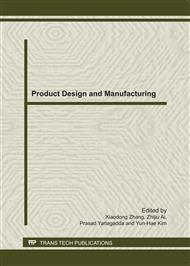p.286
p.291
p.295
p.300
p.304
p.311
p.315
p.319
p.325
A Golf Head CAD/KBE Optimization Design System
Abstract:
The purpose of this study was to construct a knowledge-based CAD/KBE system for the optimal design of golf heads. The inability of conventional CAD systems to identify existing knowledge during design and manufacturing processes is a current development bottleneck. Therefore, this study attempted to effectively introduce and integrate KBE technology into a CAD system, so as to achieve the objective of knowledge driven automation (KDA). This study selected golf iron heads with a complex-design surface as the research subject, adopted commercial CAD software (UG/NX) and its secondary development environment as a platform and applied perturbation vectors in the control of NURBS free-form surfaces. We changed the CAD’s entity shapes and physical properties, integrated the optimal principle of design with a CAD solid model, to automatically drive the CAD solid model of golf iron heads according to the design objectives, and constructed a knowledge-based optimal CAD design technology.
Info:
Periodical:
Pages:
304-310
Citation:
Online since:
September 2011
Authors:
Price:
Сopyright:
© 2011 Trans Tech Publications Ltd. All Rights Reserved
Share:
Citation:


